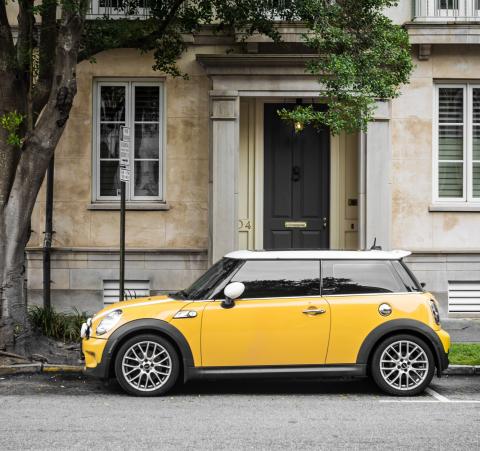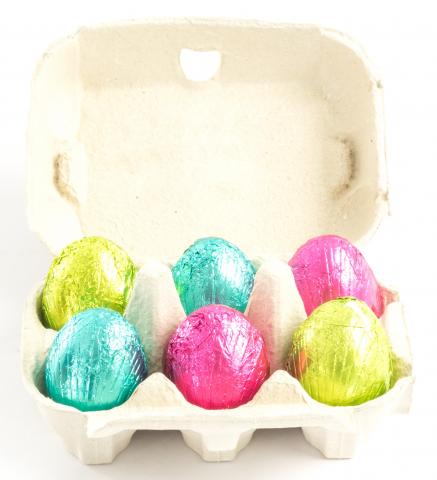Let us divide!
Look at different ways of dividing things. What do they mean? How might you show them in a picture, with things, with numbers and symbols?
Problem
Let Us Divide! printable sheet
Here are some questions about Jola's birthday party.
How would you represent them using:
words?
pictures?
numbers?
objects?
other ways?
Image

| Jola has 24 cupcakes to share equally between 3 plates for her birthday party. How many cakes will go on each plate? |
There are 8 children coming to the party (including Jola). They are all going to the cinema. How many cars will they need to take them there? Each car can take 4 children and a driver. | Image

|
Image

|
Jola is going to give everyone some chocolate eggs to take home at the end of the party. They fit into egg boxes which hold 6 eggs each. Will 50 eggs be enough for each of the 8 party guests to have a box of eggs?
|
Getting Started
Try using counters or Multilink cubes to show the cakes or chocolate eggs and make sense of the problem.
You could use Lego people to show the children at the party.
Student Solutions
The solutions sent in made for interesting reading. Many pupils considered that because there were $8$ children coming to the party there were $8$ altogether. However Jola made it up to $9$. Swaathi in $5$k from the Garden International School in Malaysia was one of those but sent in a file that showed her interesting working as follows:
I started solving with the first problem that is:
It's Jola's birthday and she is having a party. She has $24$ cup-cakes to share equally between $3$ plates for the party. How many cakes will go on each plate?
My working out

Therefore, there are $8$ cup-cakes on each plate.
Next, I started with the second problem that is:
There are $8$ children coming to the party. They are all going to the cinema. How many cars will they need to take them there? Each car will hold $4$ children and they will each need a driver too.
My Answer and working out

So, my answer is that there has to be two cars to go to the cinema.
Finally, I finished the last problem:
Jola is going to give everyone some chocolate eggs to take home at the end of the party. They fit into egg boxes which hold 6 eggs each. Will $50$ eggs be enough for each of the $8$ visitors to have a box to take home?
My Answer and working out

Every visitor will receive a box that contains $6$ eggs but as it is shown on the diagram, there will be $2$ eggs left over.
We also had solutions sent in that did consider that the eight visitors would make $9$ children altogether needing cars. These came from year $5$ at St Johns C of E Primary and pupils from 2/3/4 at HSPA in Australia. Thank you all very much.
Teachers' Resources
Why do this problem?
At first glance this looks like any collection of word problems about division. However each different scenario draws attention to a different way of thinking about the idea of division:
- sharing, grouping
- successive subtraction
- or the inverse of multiplication.
You might like to take a look at this article which explores different ways of thinking about division.
Whilst the children are working on each question, the teacher can observe just how they are considering it, and this may be somewhat different from the taught approach. Given the opportunity, children often have their own ways of working.
Possible approach
In each case it would be possible to use a range of representations of the situation to help solve the problem and children should be encouraged to explain how they have tackled the problem and arrived at their solution using different resources to help them. Look and listen carefully to hear how they make sense of the question and develop a strategy for solving it.
Talk to the children about how different people do things in different ways and explain that this activity is all about that - it's important that the children don't presume that there is one way and one way only to see the calculation.
Working within a pair or small group and tackling one problem at a time can help children to focus more deeply on one task rather than racing through them. You could suggest that they think and talk about what they are going to do before they actually begin.
They may decide to enact with objects or make a picture and just record the answer. Or use these as a prompt to transfer the problem to a calculation which they would record horizontally. Whichever, your observations will allow you to reflect on the children's confidence, language and understanding and possibly what misconceptions they hold.
Key questions
Tell me how you are working this out.
What do you think of _____'s way of doing this?
How did you know what to do first?
Is the way you've done this one different from the way you have done the others?
Possible extension
Ask the pupils to create stories that involve calculations for their partners to do.
Give the pupils a written form of a division question eg $18 ÷ ? = 3$ and challenge them to create a story around it.
Ask the children to create their own division problems based on stories about sharing, grouping, 'undoing' multiplication or successive subtraction. Additional links to other division problems can be found in this article.
Possible support
Some pupils will benefit from working with some small toys/dolls so that they can enact the situation before being able to think about the calculation, for example the children could use Lego figures to show the children at the party and counters for the cakes with circles of paper as plates. The physical act of moving objects in different ways while enacting the story can often help less confident children to work out how to think about the division in an appropriate way that makes sense to them.
